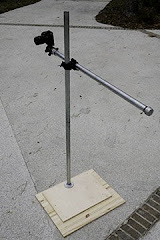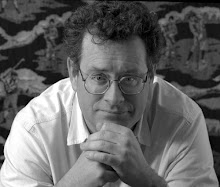During the 1970's and '80's BD (before digital), I had been an occasional user of both color and black & white infrared film. The results were interesting and unpredictable because one can never really be sure how objects will reflect or absorb the IR spectrum of light. I especially liked the results produced by B&W infrared film because they were similar in many ways to results I got using standard film with a red filter: blue skys recording as very dark, with contrasting stark white clouds, for instance. The big difference was the green foliage. Instead of recording as various shades of gray, green leaves almost always appear very white, with a soft glow that looks like trees are covered in snow.
In the digital era, there are various post-production software filters that claim to simulate IR, both color and B&W, but none of them can match a true IR photograph taken with light from the IR spectrum as opposed to the visible light spectrum. This is primarily due to the previously mentioned reflective/absorbtive qualities of organic matter when struck by IR light. So how does one take real IR pictures in the digital age? As it turns out, digital sensors are extremely sensitive to invisible IR light, and if left alone, would produce IR photos right out of the box. Camera manufacturers have had to compensate for this "feature" by placing a thin IR blocking filter on top of the sensor. Still, some IR light gets through and the trick for the IR photographer is to block the visible light rays and maximize the IR light striking the sensor.
If you just want to do a little experimentation with IR, check out the various posts online that detail which cameras are more sensitive to IR light. There is quite a range of sensitivity to the IR spectrum, and if you are lucky you may already own such a camera. Older and more inexpensive point and shoot cameras can be great candidates for IR photography.
Now that you have IR light striking the sensor, how do we get rid of the visible light? That is done with a "blocking" filter placed in front of the camera lens. Such filters are available as clip-on filters for various point and shoot cameras, and as screw on filters for SLR's. Again, there are lots of references on the web on the effectiveness and purchase of various filters. One thing to note about going this route is that exposure times will increase dramatically and the camera will almost always need to be mounted on a tripod to remove the issue of camera movement during exposure.
This method does work. You can view lots of pictures on the web taken using the filter method and many of them are quite striking. It's a low-cost way to extend your creativity by experimenting with IR photography which can be very rewarding. Expect to spend a lot of time testing various exposure, ISO, and white balance settings and with post-production software to achieve the effect you like.
Next, the expensive way....Camera modification
Subscribe to:
Post Comments (Atom)











No comments:
Post a Comment